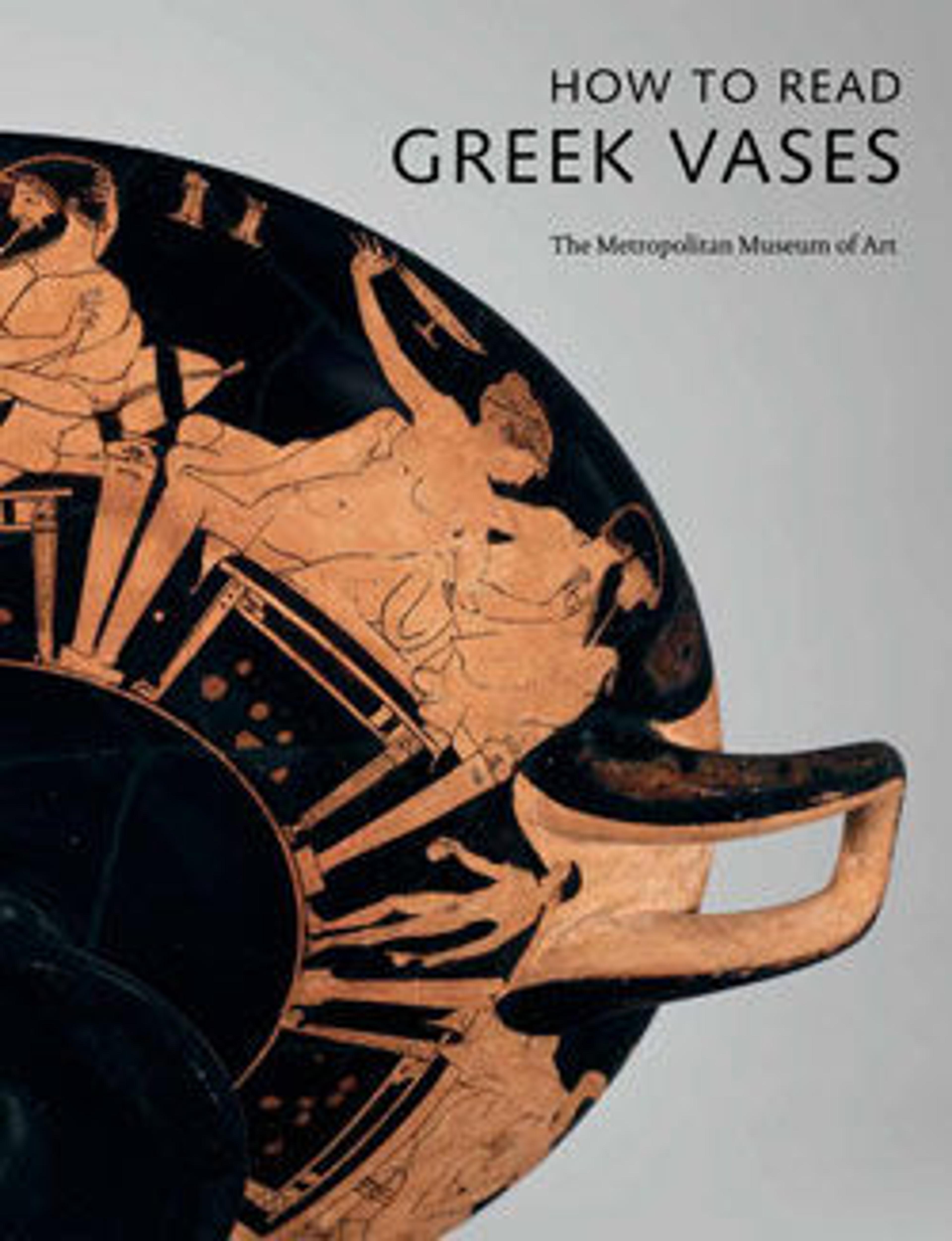Terracotta kylix (drinking cup)
Interior, satyr cooking
Although satyr iconography tends to focus on the specific pursuits of Dionysos, the god of wine, and his followers, satyrs occasionally are cast in human roles. The satyr's meal is contained in a skyphos (deep drinking cup) that stands on a support of indeterminate shape. With the stick in his left hand, he seems to be stoking a fire beneath the support.
Although satyr iconography tends to focus on the specific pursuits of Dionysos, the god of wine, and his followers, satyrs occasionally are cast in human roles. The satyr's meal is contained in a skyphos (deep drinking cup) that stands on a support of indeterminate shape. With the stick in his left hand, he seems to be stoking a fire beneath the support.
Artwork Details
- Title:Terracotta kylix (drinking cup)
- Artist:Attributed to the Euaion Painter
- Period:Classical
- Date:ca. 460–450 BCE
- Culture:Greek, Attic
- Medium:Terracotta; red-figure
- Dimensions:Diam.: 6 7/8 in. (17.5 cm)
- Classification:Vases
- Credit Line:Rogers Fund, 1906
- Object Number:06.1021.177
- Curatorial Department: Greek and Roman Art
More Artwork
Research Resources
The Met provides unparalleled resources for research and welcomes an international community of students and scholars. The Met's Open Access API is where creators and researchers can connect to the The Met collection. Open Access data and public domain images are available for unrestricted commercial and noncommercial use without permission or fee.
To request images under copyright and other restrictions, please use this Image Request form.
Feedback
We continue to research and examine historical and cultural context for objects in The Met collection. If you have comments or questions about this object record, please contact us using the form below. The Museum looks forward to receiving your comments.
